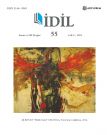İŞLEMENİN AYRIMCI KÖKENLERİ
DISCRIMINATIVE ROOTS OF EMBROIDERY
Author(s): Banu Hatice Gürcüm, Nursel BaykasoğluSubject(s): Gender Studies, Fine Arts / Performing Arts, 16th Century
Published by: Sanat ve Dil Araştırmaları Enstitüsü
Keywords: Woman; embroidery; eclectical; the Byzantine; Feminist; Suffrage; Alpilerista;
Summary/Abstract: Embroidery art has been an influential symbol for the function and place of woman in the community. Though being neglected through the pragmatism and creativity axis by man, sewing and embroidering has become a way of silent way of testimony for women from the sixteenth century. The concepts of high art and low art emerging through the differentiation of art from crafts have resulted in disclaiming of embroidery as art and expressing embroidery as woman’s occupation. Embroidery, which was left inside the social domain of femininity, has proved to go far beyond than pertaining aesthetics while fulfilling the needs or embellishing the house or commodity. Woman has used embroidery as a way expressing herself or as a way of a protest in many historical processes where she was imprisoned inside the house with many imposed restrictions in education and social life. Thus, this research aims to explain the situations where this tacit expression means have been used to explain the emotional wellbeing of women or to express the cruelties in her everyday life other than the aesthetic usage of embroidery that all of us happen to know.
Journal: İdil Sanat ve Dil Dergisi
- Issue Year: 8/2019
- Issue No: 55
- Page Range: 349-357
- Page Count: 9
- Language: Turkish

